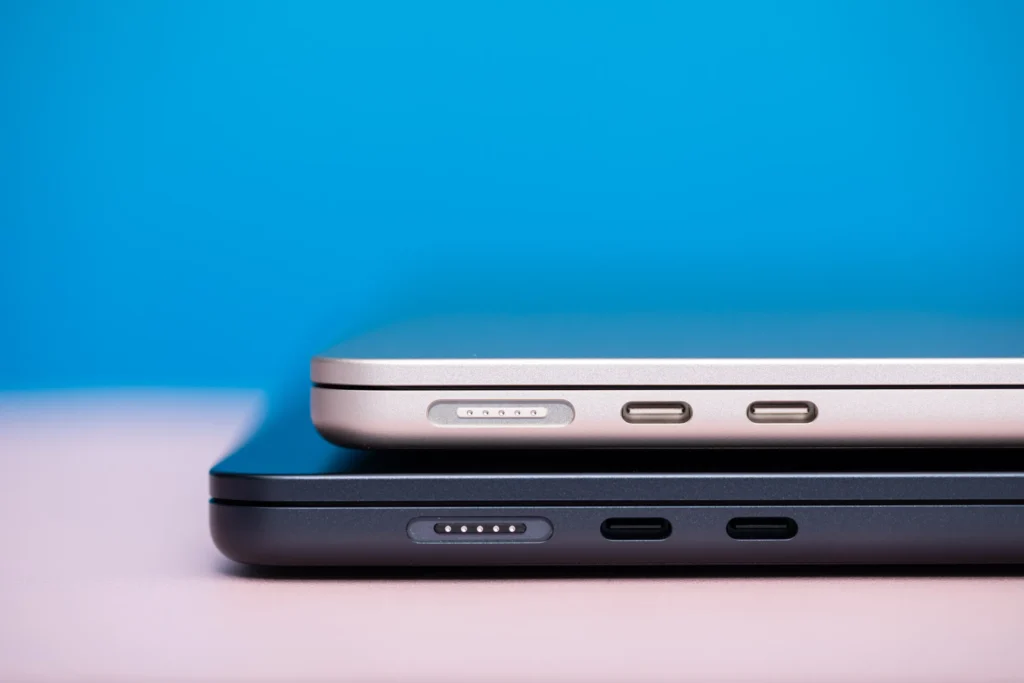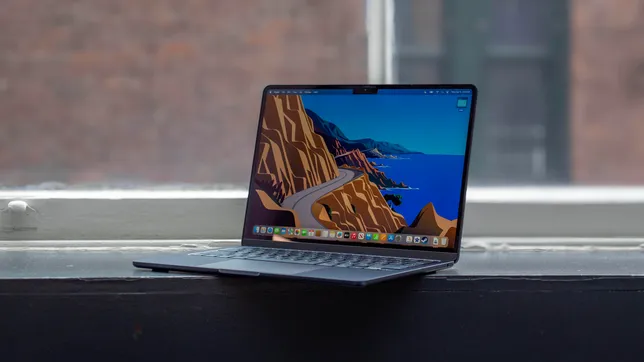The MacBook lineup has fallen deeper into an identity crisis. The new MacBook Air M3 is a straightforward improvement over its predecessor, with the same sleek, Pro-like design with tucked-away speakers and four-color options. The trackpad is still smooth as a Zamboni’d ice rink. Combined with a few new quality-of-life features, the experience has only gotten more refined.
But the MacBook lineup is more crowded than ever, with the 13-inch Air, 15-inch Air, and base model 14-inch Pro jostling for space. And the base models, which start at $1,099 for the 13-inch and $1,299 for the 15-inch, still don’t come with enough memory or storage for the price. That makes it easy to get sucked into a dizzying array of upgrades that can cost you hundreds of dollars. So even though the MacBook Air itself is better than ever, it’s the hardest it’s ever been to figure out what MacBook you should buy.
The Air M3s are nearly identical to the still-great Air M2s, which remain on sale for $100 less. They have the same chassis, display, battery, speakers, webcam, ports, and configuration options — and the midnight color still collects so many fingerprints it might as well become a hobby. But a few key upgrades make the new model easily worth the extra $100: the M3 processor is a little faster, the microphone and Wi-Fi are better, and most importantly, Apple doubled the storage speed on the 256GB version, fixing a major flaw with the base M2 Air.
The most exciting new feature for some is that the MacBook Air M3 can now power two external monitors with the lid closed, whereas the M2 and M1 can only ever power one. I don’t think I’m capable of matching the level of enthusiasm some people have about this new feature, but I do like how quickly the main display switches from the MacBook Air to the second monitor after the lid is closed. I tested this new feature with two 27-inch Studio Displays, and yup — worked seamlessly. Every multi-monitor Windows setup I’ve encountered, including my own, takes longer to register when a new display has been connected.
The Air is available in both 13-inch and 15-inch models; aside from the display size, the differences are minor. The speakers on the 15-inch Air M3 are noticeably louder, with a wider frequency response on the low end. Blasting Rob Zombie’s Dragula while I sauteed onions in my kitchen sounded nearly indistinguishable from playing the same song on my partner’s MacBook Pro 14 M2 Max. The 15-inch also has a larger battery (66.5 Whr versus 52.6 Whr) to accommodate its larger display, but it lasts just as long as the 13-inch, from sunup to past my bedtime. Their displays are identical except in size, and the rest of their configuration options are the same, save for the low-end eight-core CPU / eight-core GPU combo that’s only on the $1,099 configuration of the 13-inch Air M3 (or, as I like to call it, the base-base version).

Apple sent me both MacBook Air sizes, with 16GB of memory and 512GB of storage in each, and an eight-core CPU / 10-core GPU. The Air M3s are 16 to 18 percent faster in single- and multicore processing than the M2s with the same CPU and GPU core counts. So, anything you can do on a base MacBook Pro, you can do on a MacBook Air. The base MacBook Pro M3 with the same processor does have slightly better multicore performance than the 13-inch Air, likely due to its active cooling, but it’s actually beaten by the 15-inch Air, likely due to that Air’s larger, passive heatsink. None of these machines is designed for heavy, multicore workloads, though. That’s Pro territory, where the M3s have more cores and more memory for more money.
Loading and editing Illustrator files was just as snappy as doing the same on the MacBook Pro M2 Max, as were the usual doom scrolling, browser tab hoarding, and other things that enhance your productivity and take it away at the same time. I was surprised with the gaming performance in Shadow of the Tomb Raider and Death Stranding, albeit the graphics need to be at their lowest settings to get close to 60 fps. The highest settings tanked the performance to an average of 25 fps.
Apple is making a big deal about hardware-accelerated ray tracing coming to the MacBook Air for the first time by way of its M3 chip. But there aren’t any ray-traced games available to play natively on macOS — and even if there were, it just doesn’t mean much on the base M3 chips because they don’t have enough GPU cores or memory to render those effects. Apple uses unified memory in its processors, so the CPU and GPU cores are borrowing from the same pool. If you try to render a complex 3D scene with lots of light sources and detailed textures, like Blender’s Barbershop path tracing demo, the machine will run out of available GPU memory before it can finish. (I tried this on both M3 Airs, and that’s what happened, even with 16GB of memory.) And because the MacBook Airs are passively cooled, there’s nothing to prevent the processor from throttling when it gets too hot.

